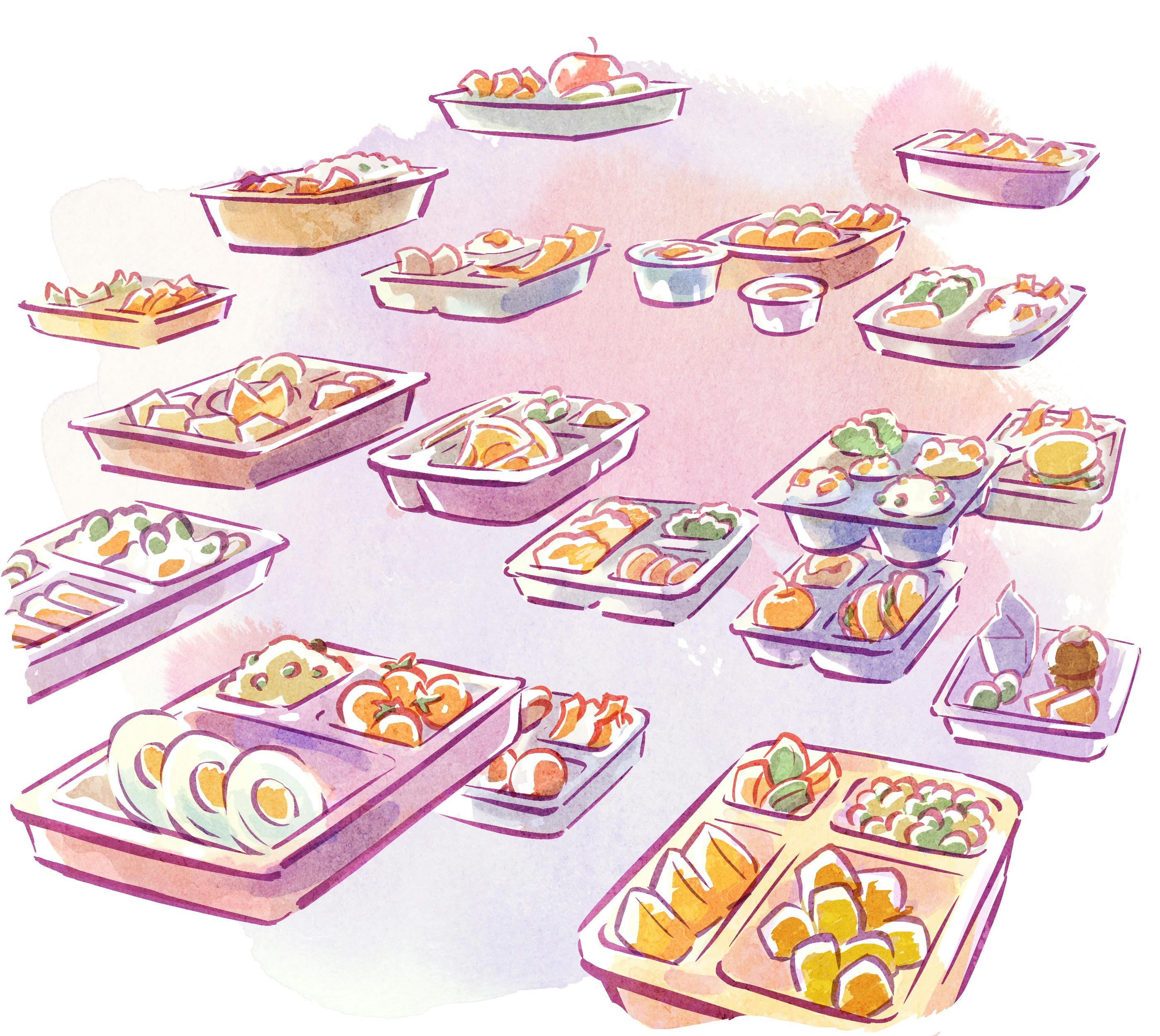How to Make a Healthy School Lunch
A variety of fruits and vegetables are the foundation of healthy lunches and should make up half of a child's plate. The other half should contain whole grains and nutritious proteins. Unfortunately, most U.S. children don't eat enough vegetables and fruit every day.
Filling half of a child's plate with fruits and vegetables is an excellent way to increase the number of servings they eat every day. Another is to cut back on the portion sizes of other foods you offer, particularly unhealthy foods. Children eat more vegetables when they're offered bigger portions, so load up on produce and cut back on processed foods.
Vegetables
Offer a variety of vegetables of all colors — the more, the better. No single vegetable provides all of the nutrients children need. Different colors in fruits and vegetables are associated with different types of phytochemicals, which are the beneficial compounds produced by plants. Try to include several different colors of vegetables in your lunch offering.
One vegetable you should avoid offering is potatoes. Potatoes are high in the type of carbohydrates that quickly digest. As a result, they cause a quick rise in blood sugar that's associated with weight gain and diabetes.
Fruits
As with vegetables, you should offer a variety of fruits of different colors. Fruits are also high in disease-preventing phytochemicals. Fortunately, the naturally sweet taste of fruits appeals to children, and it’s usually easy to add fruit to a child’s diet. When it comes to fruits, it's hard to go wrong, but avoid offering dried fruit and fruit juice at lunch.
Dried fruit is acceptable in small quantities, but it can stick to children's teeth and promote tooth decay. You should avoid giving it to kids during lunch because they can't brush their teeth afterward. Fruit juice lacks the beneficial fiber of whole fruit. Fiber fills children up and plays an essential role in digestion.
Whole grains
Whole grains contain all three parts of the grain, including the bran, germ, and endosperm. Unlike refined, white grains, whole grains have bran, fiber, and phytochemicals that offer health benefits such as steady blood sugar and lower cholesterol. Whole grains should make up one-fourth of a child's lunch.
Healthy protein
Protein is one of the three macronutrients children's bodies need. It plays a significant role in building muscle, strengthening skin and bones, transporting nutrients, and producing hormones. However, protein is one nutrient that U.S. children already consume in excess. Most children get more protein than they need.
When you're planning school lunch, focus on low-fat, plant-based proteins such as beans, peas, nuts, and seeds. If you're offering animal-based options, poultry, fish, eggs, and low-fat dairy are good choices. Avoid processed meats such as hot dogs, sausage, deli meats, and bacon, and limit red meats such as pork, beef, and lamb. Aim for one-fourth of a child's lunch to be a healthy protein.
Healthy fats
Fat is an essential part of a growing child's diet but choosing the right type of fat is vital. Offer foods with unsaturated fats such as nuts, seeds, and avocados. Limit saturated fats such as those found in red meats. You should avoid giving children trans fats, a significant ingredient in highly processed foods.
Drinks
Water is the best drink option at lunch. Increased water intake is associated with improved attention, memory, and cognition in children. Putting up signs encouraging children to drink and installing paper cup dispensers near water fountains can significantly increase how much water students drink.
Choice and Presentation
Finally, two keys to getting children to embrace healthy eating are choice and presentation.
Choice
If you're packing a lunch for your child, offer them choices within categories. Share information about healthy eating with them and let them pick out fruits and vegetables when you go grocery shopping. If you're preparing school lunches for children, offer a wide variety of prepared fruits and vegetables. Encourage kids to choose several different color options by posting brightly colored signs in the cafeteria.
Presentation
A fun presentation can persuade a child to choose a healthy option they might otherwise pass up. Cut fruits and vegetables into bite-sized pieced and put them on a kabob with blunt edges. if you are packing lunch, a bento-style, multiple compartment lunchbox will keep food separate and more visually appealing.
Creating themes for school lunches may convince kids to try new foods. Some popular options are country-based themes such as Mexican or Chinese. Everyone loves pizza, so you can make this a healthier choice by letting kids create pizzas with whole-wheat pitas, lots of fresh vegetables, and low-fat mozzarella.
By only giving nutritious options and focusing on fun presentations, you can encourage children to eat a healthy school lunch that will give them the energy and nutrients they need to be at their best all day.
